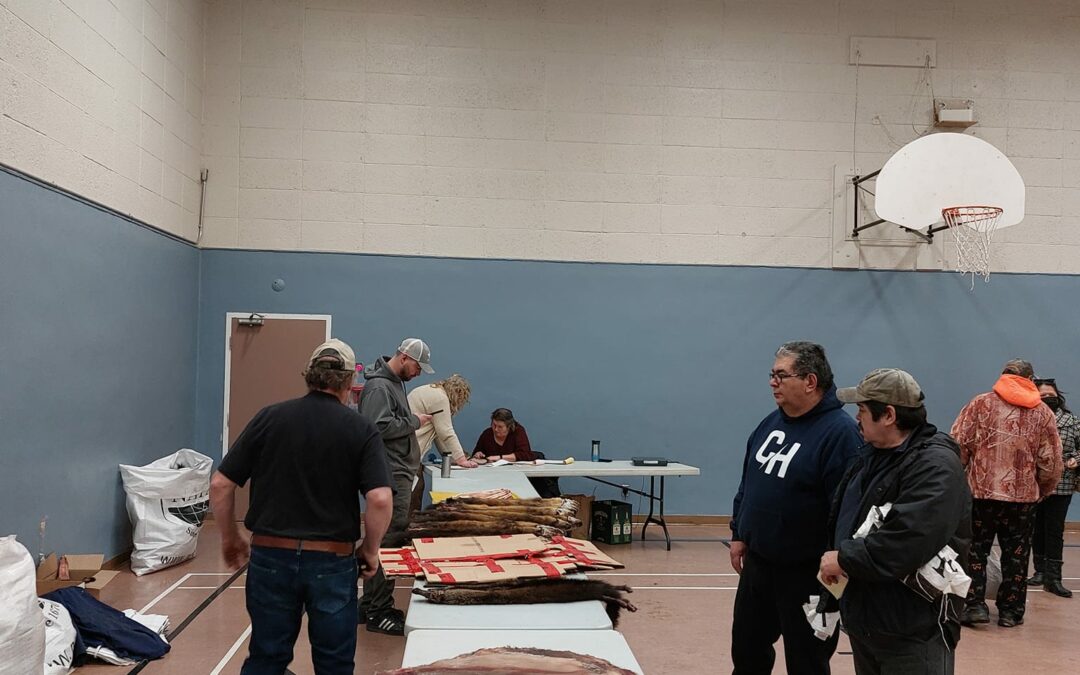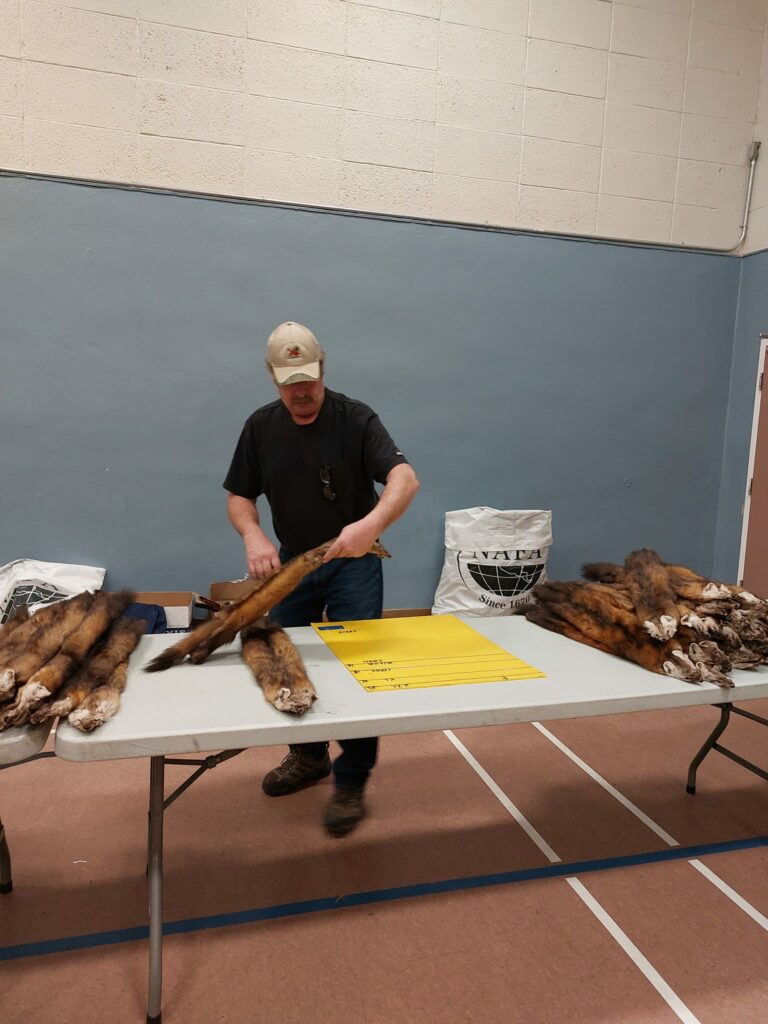The Northern Saskatchewan Trappers Association’s first fur table of 2023 is now wrapped up.
The event went last weekend at Parkland Hall in Prince Albert. According to the trapper’s association 20 trappers from a range of communities sold over 500 furs for just over $17,000.
Stan Morin, a board member for the Northern Saskatchewan Trappers Association said they had previously held the fur table event in December, but moved it to January for a change of pace. He said like everyone else trappers are having to deal with higher costs for fuel and other important supplies.
“A lot of them (Trappers) slowed right down because of the gas prices, food, its hard to go,” he said.
One buyer was on hand at the table Saturday, Groenewold Fur and Wool Company, which is based out of Forreston Illinois in the United States. Don Gordon was working on behalf of the company at the fur table and told MBC Radio News the fur market has seen some changes over the last number of years. He explained that some furs have seen a real decline when it comes to price.
“The coyote market has pretty much fell right off, a couple years ago Canada Goose announced that they were no longer going to be using coyote fur on any of their winter garment,” he said.
Gordon added coyote fur is somewhat of an exception as there is a market for most other furs. However, the prices which those furs can bring in are also not as high as they have been in recent years.
“Sable of coarse or pine martin is a species most of the northern trappers go after, they’re easy to catch, easy to put up, prices are still a little bit low from what they were in the past, skin five, six years ago that brought $100, $120, is down $35, $40 on averages,” he said.
Looking at the industry overall Gordon said much of the demand for fur is from those who make items like gloves, hats and other accessories. He said the industry is also still dealing with the fallout from the COVID-19 pandemic, specifically in China where tough measures to combat the virus have only recently been lifted. Gordon explained this has impacted manufacturing of garments and has as well hurt demand in what has historically been a strong market for fur.
“That is hurting our industry probably as hard as anything,” he said.
Gordon said the number of trappers who came through the door at the P.A. table to sell furs was down quite a lot when compared with previous years. When he spoke with trappers who did come out, Gordon was told by many that they did not start trapping until they knew they would have someone who they could sell their furs to, which led to many starting later and having less to offer.
“It would have been nice to see a line up out the door, two years ago we were here and that’s what it was,” he said.
(All photos courtesy of Northern Saskatchewan Trappers Association Facebook.)

